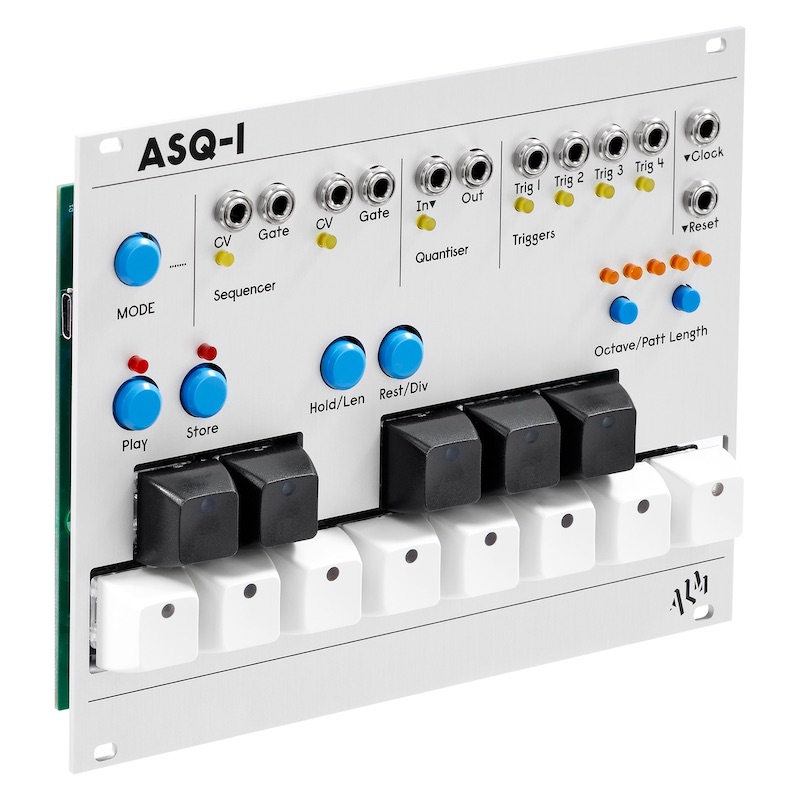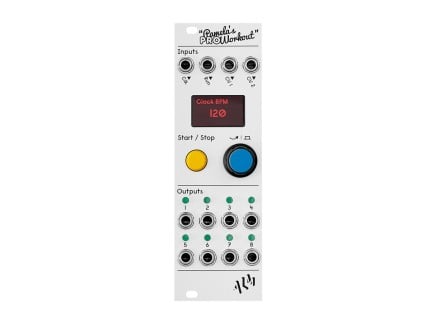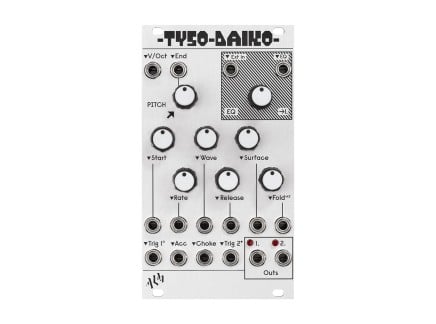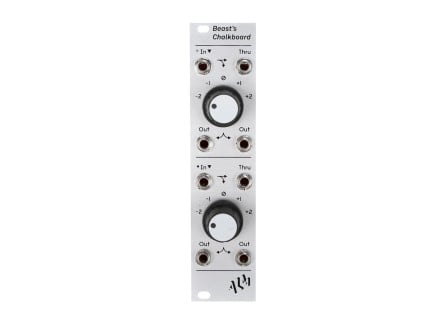Most modular manufacturers have their own character—a unique design direction that makes all of their designs feel consistent; a theme that unifies their entire lineup. If you were to ask us what most strongly characterizes ALM Busy Circuits? They fully embrace the quirks and character of '80s and '90s electronic music gear and dance music, and—more importantly—they're dang fun.
The same can be said of their newest module, the ASQ-1: a multi-mode sequencer designed to be the brain of your modular system. With all the functionality you need to turn any Eurorack modular synth into a live-jamming groovebox, ASQ-1 is great for sequencing drums, basslines, leads, samples, and more...and best of all, it's easy and fast to learn and to perform with.
Check out the video above for an ear massage...and to get an idea of some of ASQ-1's finer aspects, and then read on to take a closer look at what all ASQ-1 can do.
ASQ-1 Sequencer Overview
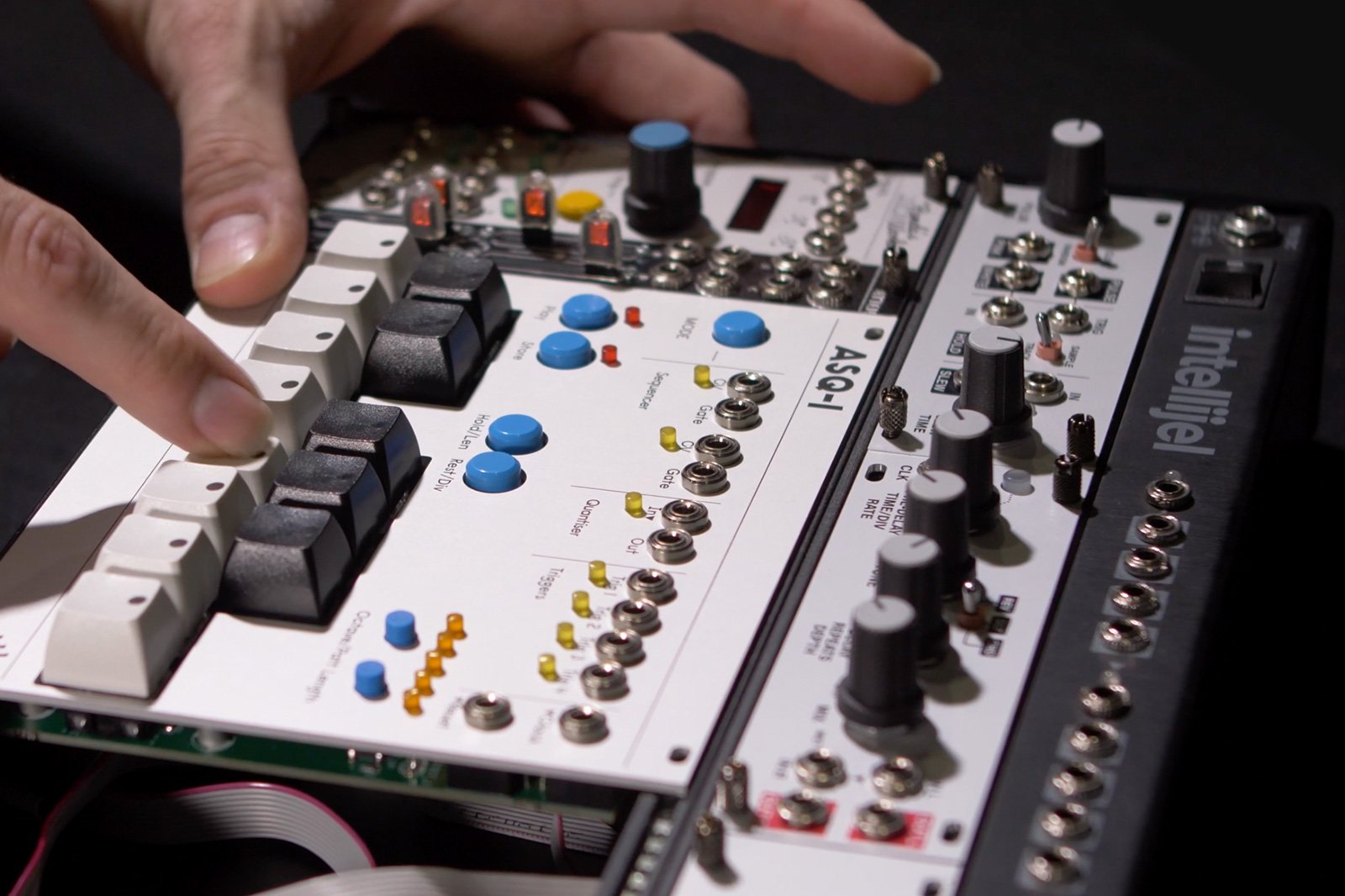
ALM's ASQ-1 is a multi-mode sequencer for Eurorack modular synthesizers, designed to make it quick and easy to build up entire tracks on the fly. It features several internal sequencing utilities: two CV/gate sequencers, a quantizer, and four trigger sequencers, all of which are programmed via the prominent front-panel array of keys that look like they came straight off a mechanical keyboard or TR-909. ASQ-1 does have an internal clock generator, but it's perhaps best used with an external clock source, giving you greater flexibility in terms of timing, swing generation, etc. We'd strongly recommend pairing it with a Pamela's Pro Workout.
Let's talk about the CV/gate sequencing first. The Sequencer mode provides you with two tracks of 1V/oct CV/gate sequencing. Notes can be entered in pseudo-SH-101 fashion, meaning that, when the sequence isn't playing, you can create sequences simply by pressing keys in the order you want them to be played. You can insert rests via the dedicated rest button, you can change keyboard octaves note-by-note, and you can insert slides/ties simply by pressing and holding the first note of the slide, and then pressing the second note with the first one held. Like on a Roland SH-101, you can use this functionality to create sequences of any duration, up to the limit of 128 steps. Determined users can count the number of steps they've entered to keep to a powers-of-two grid, but much of the magic in this type of sequencer is that it can be difficult to keep track of the number of steps you've programmed...leading to odd-length patterns that create peculiar polyrhythms with other synchronized patterns.
Additionally, each sequencer can allow you to enter notes as it is playing, punching in to your pre-recorded sequence...allowing for somewhat more straightforward/conventional note entry. Each of the two sequencers can operate at the same clock rate, determined by the internal clock or an incoming external clock—but each one can also be set to one of several clock subdivision rates, allowing for on-the-fly alterations and more complex sequencing tricks. Sequence length can be altered after notes have been entered, and sequences can be stored to internal memory; moreover, one or both sequences can be live-transposed using the mechanical keyboard. This is all super cool.
Moving on, ASQ-1 also features a quantizer for external voltages with a dedicated input and output. The quantizer can be set to any desired scale, simply by pressing the keys corresponding to the pitch classes you'd like to allow as part of your scale—and, as with sequences, scales can be stored to internal memory. Incoming CV is sampled at every clock cycle, and the quantized CV is produced at the output. There's not dedicated gate input or output associated with the quantizer—so if you're using it for articulated sounds, you'll need to do some external patching to create your desired rhythmic inflections. As with the sequencers, the quantizer clock can be set to a selectable subdivision of the global clock rate—a neat trick. While not as immediately flexible/programmable as the sequencers, the quantizer is a great way of generating evolving arpeggios, random basses or leads, and much more.
Finally, the "pattern mode" of programming allows you to define up to four rhythmic patterns of up to 64 steps long each. This features TR-style sequencing, where the eight white keys are used to program individual step triggers and the octave buttons are used to access different bars within a pattern. Like in the sequencer mode, each track can be set to a different clock subdivision, and notes can be entered as the pattern plays in a sort of "tap rhythm" entry mode. As with the other modes, patterns can be stored...however, all four trigger output tracks use the same 13-slot memory bank. So you won't be storing huge numbers of tracks, but this does make it possible to easily swap data between tracks, to duplicate rhythms and modify on other tracks, and more. This might be seen as a limitation, but given just how fast it is to build up a rhythm on the ASQ-1, I'm not too bothered: it truly seems its focus is on building tracks in real time, and it certainly makes that process simple.
The Takeaways
You might look at ASQ-1 and think that it seems a bit limited...but frankly, its limitations are part of what gives it focus and makes it truly unique and interesting. As with anything in the world of Eurorack modular synths, if there's functionality you're missing here, you can likely achieve it by adding extra modules. Want definable probability for the trigger outputs? Add a CuteLab Missed Opportunities. Looking for more flexible clocking arrangements? Add a Pamela's Pro Workout. Looking for faster on-the-fly octave switching? Try a Beast's Chalkboard.
Frankly, ASQ-1 seems like it gets straight to the point: it's a simple, easy-to-learn, quick-to-use interface that could easily tie a groovebox-oriented Eurorack system together. If you're making live rhythmically-oriented music and enjoy the workflow of old-school Roland sequencers, odds are that you'll love using ASQ-1. And if you're just piecing together your first instrument and you want something straightforward to build up live jams, it's hard to think of a more suitable sequencer in Eurorack format.



